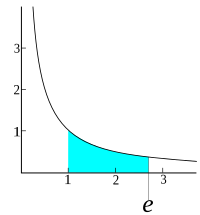
Photo from wikipedia
BACKGROUND 4-Hydroxyphenylpyruvate dioxygenase (HPPD) herbicides control broadleaf and gramineous weeds with better crop safety for corn, sorghum and wheat. Multiple screening models in silico have been established to obtain novel… Click to show full abstract
BACKGROUND 4-Hydroxyphenylpyruvate dioxygenase (HPPD) herbicides control broadleaf and gramineous weeds with better crop safety for corn, sorghum and wheat. Multiple screening models in silico have been established to obtain novel lead compounds as HPPD inhibition herbicides. RESULTS Topomer comparative molecular field analysis (CoMFA) combined with Topomer Search technology and Bayesian, Genetic Approximation Functions (GFA) and Multiple Linear Regression (MLR) models generated by calculating different descriptors were constructed for the quinazolindione derivatives of HPPD inhibitors. The coefficient of determination (r2 ) of Topomer CoMFA, MLR and GFA were 0.975, 0.970, 0.968, respectively, all the models established displayed excellent accuracy and high predictive capacity. Five compounds with potential HPPD inhibition were obtained via screening fragment library combined with the validation of the above models and molecular docking studies. After molecular dynamics (MD) validation and absorption, distribution, metabolism, excretion and toxicity (ADMET) prediction, compound 2-(2-amino-4-(4H-1,2,4-triazol-4-yl) benzoyl)-3-hydroxycyclohex-2-en-1-one not only exhibited stable interactions with the protein but also high solubility and low toxicity, which was expected to be developed as a potential novel HPPD inhibition herbicide. CONCLUSION In this study, five compounds were obtained through multiple QSAR screening. Molecular docking and MD experiments showed that the constructed approach had good screening ability for HPPD inhibitors. This work provided molecular structural information for the developing novel, highly efficient and low toxicity HPPD inhibitors. This article is protected by copyright. All rights reserved.
Journal Title: Journal of the science of food and agriculture
Year Published: 2023
Link to full text (if available)
Share on Social Media: Sign Up to like & get
recommendations!